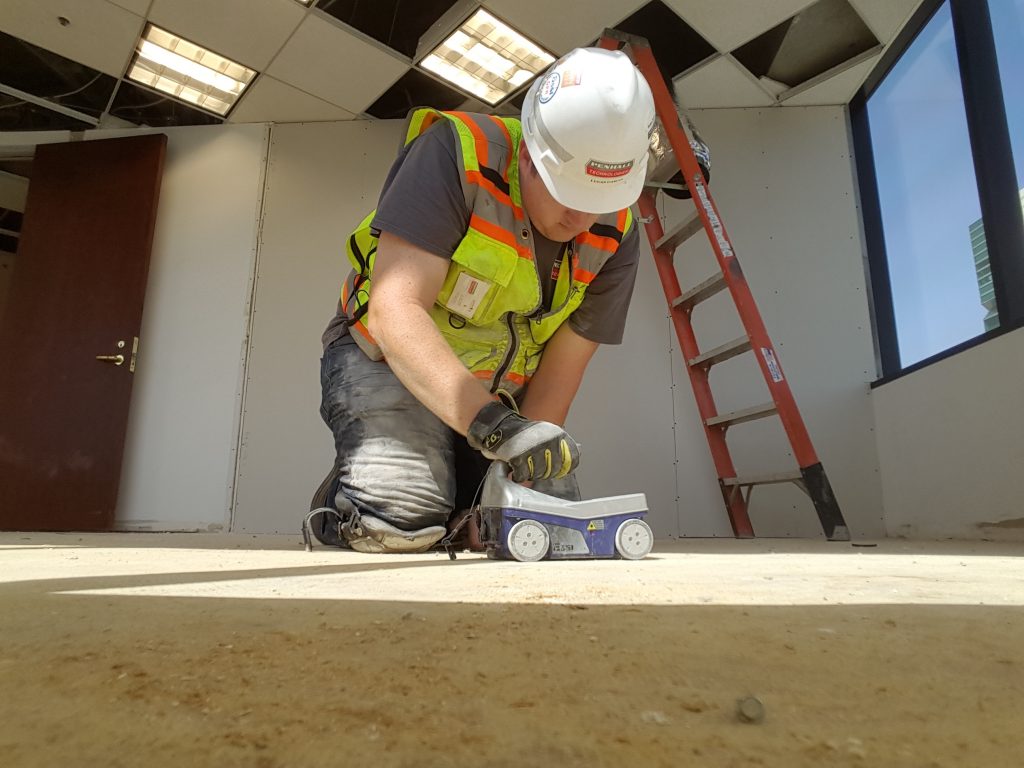Exploring the Midst: A Comprehensive Overview to Concrete Scanning and Its Diverse Applications
In the world of construction and facilities growth, the meticulous procedure of concrete scanning holds a pivotal function in making certain the structural integrity and safety and security of tasks. As innovation remains to advance, the applications of concrete scanning have actually expanded far beyond simple surface-level analyses. From detecting rebar and post-tension cables to mapping out channels and gaps concealed within concrete structures, the capacities of modern scanning strategies are both excellent and crucial. However, real depth of concrete scanning's prospective reaches also further, branching right into unexpected markets and sparking cutting-edge services. The interconnected web of possibilities that concrete scanning presents is not just interesting yet also vital for the development of different sectors.
Value of Concrete Scanning
Comprehending the relevance of concrete scanning is vital in making sure the safety and honesty of structures during building and construction and improvement jobs. Concrete scanning uses advanced technologies such as ground-penetrating radar (GPR) and electro-magnetic induction to detect ingrained items, gaps, or various other abnormalities within concrete frameworks.
Moreover, concrete scanning plays a critical function in ensuring compliance with building regulations and guidelines that mandate the protection of existing architectural components throughout building activities. By properly mapping out the interior composition of concrete, scanning technologies make it possible for building experts to make educated decisions that promote the architectural stability and durability of buildings and facilities tasks. Essentially, the importance of concrete scanning hinges on its ability to guard both the structural honesty and the workers involved in construction endeavors.
Technologies Used in Concrete Scanning
Concrete scanning depends on sophisticated technologies such as ground-penetrating radar (GPR) and electro-magnetic induction to accurately identify embedded things and abnormalities within concrete frameworks. Ground-penetrating radar operates by emitting high-frequency electro-magnetic waves right into the concrete.
Electro-magnetic induction, on the other hand, works by generating electromagnetic fields around a concrete framework via a transmitter coil. When steel things exist within the concrete, they disrupt these magnetic fields, creating eddy currents to flow via the metal. By determining the adjustments in the magnetic fields with a receiver coil, the system can identify the place of metallic objects in the concrete.
These advanced innovations play a critical role in non-destructive testing, making sure the safety and security and honesty of concrete structures in different industries.
Applications in Construction Sector
Within the construction industry, concrete scanning technology locates varied applications that improve project effectiveness and safety. Furthermore, concrete scanning is made use of for locating gaps, such as air pockets or locations of deterioration have a peek here within concrete, which can compromise the general stamina of a structure. Concrete scanning plays a critical function in top quality control by validating the density of concrete covers over reinforcement, making certain compliance with style specifications and requirements.

Security Benefits of Concrete Scanning
In the world of construction safety, the application of concrete scanning innovation offers a critical benefit in preemptively determining potential hazards and fortifying structural integrity. By using innovative scanning techniques such as ground-penetrating radar (GPR) and electro-magnetic induction, construction groups can accurately situate rebar, post-tension cords, conduits, and other covert items within concrete structures. This positive strategy substantially lowers the danger of unintentional strikes during exploration, reducing, or coring activities, thereby stopping expensive damages, injuries, and project delays.
Additionally, concrete scanning improves employee security by offering real-time information concerning the architectural condition of concrete components. By dealing with possible security issues quickly, concrete scanning adds to developing a safe functioning setting and mitigating the likelihood of architectural failures or crashes on construction go to this site websites.
Future Fads in Concrete Scanning
Emerging advancements in scanning technology are poised to change the field of concrete examination and analysis. One major fad that is acquiring grip is the combination of expert system (AI) and artificial intelligence algorithms right into concrete scanning devices. By harnessing the power of AI, these systems can analyze substantial quantities of information gathered throughout scanning procedures to offer even more comprehensive and exact understandings into the condition of concrete frameworks. This can help in finding hidden flaws, predicting potential architectural failures, and also recommending upkeep methods.
An additional substantial fad is the growth of even more user-friendly and portable scanning devices. Miniaturization of scanning equipment allows for much easier access to restricted rooms and remote locations, making assessments much more detailed and reliable. Furthermore, improvements in cordless interaction technologies make it possible for real-time data transfer and evaluation, promoting quicker decision-making procedures.
Additionally, there is an expanding concentrate on sustainability in concrete scanning technologies - RainierGPR Concrete Scanning. Producers are progressively integrating eco-friendly materials and energy-efficient functions right into their devices to decrease environmental effect. These future fads are readied to improve the Visit Your URL effectiveness, accuracy, and sustainability of concrete scanning methods, forming the market's future landscape
Verdict
Finally, concrete scanning plays an essential function in the building and construction sector by making certain the safety and security and effectiveness of numerous jobs. By utilizing innovative innovations, such as GPR and radar imaging, professionals have the ability to properly spot possible dangers within concrete structures. The applications of concrete scanning are large and proceed to develop, making it a vital device for maintaining the honesty of structures and infrastructure. As technology developments, the future of concrete scanning holds encouraging advancements for boosting construction processes.

Comments on “Advanced RainierGPR Concrete Scanning Providers Unveiled”